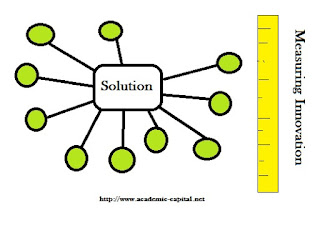 |
| Are you able to "Face the Cliff"? |
Perception and business success are inherently linked
together in a union that will continue to flourish. Business leaders that can
perceive patterns in the environment can eventually find solutions to such
problems in their pursuit for organizational growth. It is through this problem
solving approach that businesses are more capable of selling products and
services with market appeal. The use of art helps highlight how perceptual
patterns can be found and its influence on the ability to use these patterns to
recognize potential possible solutions to complex environmental problems.
Perception is the ability to recognize, organize and
interpret perceptual information from our senses to understand the environment.
Even though each of us holds the
biological capacity to perceive changes in our environment we do not always
have the mental faculty to make sense of those perceptions. For example, our
eyes might see something interesting but our brain has completely skipped over
it. Without recognition and awareness the information is useless.
The reason why we have skipped over important environmental
information is because we are not accustomed to thinking “out of the box”. We
are confined and constrained by the way we were taught to think and how to
think about the world. This pre-defined understanding limits our ability to
recognize new cues as important to understanding the entire picture of the
problem.
To perceive is not enough. One must also seek to take that
piece of information and try and find a place for it in a larger environmental
puzzle. For example, you recently discovered you are missing some money out of
your wallet. This means you have been cued into a problem. You then begin to
trace your steps by thinking about when you last saw the money and the things
you may have bought. If you remember a purchase at McDonalds yesterday you
might stop searching because you have found the answer.
Successful business ideas are often found, discovered, and
implemented in much the same way. Business leaders with the ability to perceive
changes in their environment are also more likely to recognize these changes
and then search out possible solutions to that change. If they are successful
they are able to see a trend and then study that trend to come to appropriate
market solutions that improves business sustainability.
Before one can adequately focus on solving complex business
problems they must recognize the problem and then seek to find a pattern or
relationship among the variables to describe the greater trend. As the
information seeking behavior continues, a stronger and better thought out
pattern becomes developed and the solutions become clearer.
For example, a person who can see a pattern in art (i.e. the
face in the picture) may be better able to see changes in a business environment.
It is through this pattern recognition that the mind can understanding new ways
of looking at information and be open to the experience that there are multiple
solutions to the same problem. It is through the analysis of these multiple
solutions that the most practical and economically viable patterns are chosen.
Without this openness to experience people will naturally
skip over that information which doesn’t fit within their schematic understanding
of their environment. Those that rely heavily on previous information and methods
of thinking are at a disadvantage in the business world. Such people have difficulty
thinking about the nature of a problem and finding appropriate solutions that enhance
the likelihood of a positive outcome precisely because they are not aware of
the problem.
Business is all about solving problems. Products are
developed and sold because they have some practical utility for customers and
solve important problems. Without the ability to recognize and solve new
problems there will be fewer new products and services being developed. For
example, China has moved beyond copying American products to developing and
implementing their own products in the market at a fraction of the cost of what
is being developed in the U.S. If business leaders in the U.S. do not find ways
of processing new ideas, concepts and thoughts for practical utility they will be
less competitive over the long run. Continue reliance on out-dated management techniques and organizational structures will further the decline. In other words, they will lose revenue and
potential investment income because they cannot solve market problems
(patterns) at a price others can afford. Are you able to “face” the cliff?

